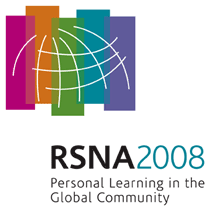
Abstract Archives of the RSNA, 2008
LL-NR2966
Cystic Lesions Affecting the Spine: Imaging and Differential Diagnosis
Education Exhibits
Presented in 2008
Sachin Mathur MBBS, FRCR, Presenter: Nothing to Disclose
Suraj Jayant Amonkar MBBCh, FRCR, Abstract Co-Author: Nothing to Disclose
Calvin Soh FRCR, Abstract Co-Author: Nothing to Disclose
Roger Laitt MBBCH, Abstract Co-Author: Nothing to Disclose
David Hughes MBBCH, Abstract Co-Author: Nothing to Disclose
Amit Herwadkar MBBS, Abstract Co-Author: Nothing to Disclose
• To illustrate the malignant and benign lesions with cystic components affecting the spinal cord and spine.
• To demonstrate the MR imaging features that help to narrow the differential diagnosis.
• The lesions are discussed according to their location as:
o Intramedullary (syringomyelia, astrocytoma, ependymoma, haemangioblastoma and metastasis)
o Intradural-extramedullary (neurenteric cyst, epidermoid and dermoid cyst, neural sheath tumor, paraganglioma)
o Extradural(arachnoid cyst, synovial cyst, ligamentum flavum cyst, discal cyst, interspinous cyst, aneurysmal bone cyst, giant cell tumor)
• Specific imaging features of each pathology are discussed that will aid in diagnosis.
• In establishing the differential diagnosis of cystic spinal lesions, location is the most important feature along with age, gender and MR imaging features.
• Presence of cystic components in a spinal lesion helps to narrow the differential diagnosis further.
• MR imaging plays a central role in identifying the cystic component and location of a lesion within the spinal canal. Contrast administration helps to differentiate pure tumoral cysts from tumor associated syringomyelic cavities.
Mathur, S,
Amonkar, S,
Soh, C,
Laitt, R,
Hughes, D,
Herwadkar, A,
Cystic Lesions Affecting the Spine: Imaging and Differential Diagnosis. Radiological Society of North America 2008 Scientific Assembly and Annual Meeting, February 18 - February 20, 2008 ,Chicago IL.
http://archive.rsna.org/2008/6017834.html

